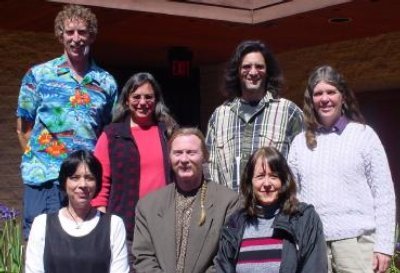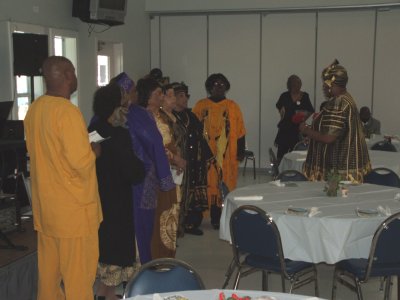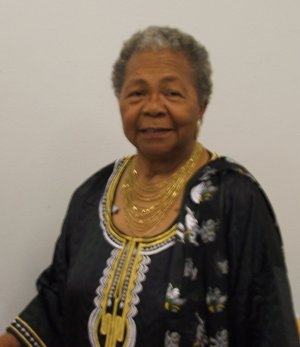- Elizabeth Larson
- Posted On
Carle High: A passion for educational excellence

CLEARLAKE – For educator Bill MacDougall, successful education relies on smaller classrooms, and allowing teachers to get to know, understand and nurture their students.
MacDougall knows what he's talking about. For 13 years he's been principal of William C. Carle Continuation High School, which the state Department of Education last week named a model continuation high school for the third time.
“We've been on a good run,” he said.
MacDougall has been an educator for 28 years; for 20 of those years, he's worked in administration. He started his career in a one-room Humboldt County continuation high school.
His belief in nurturing his students has created family bonds. He said that on Thursday one of the students from that one-room schoolhouse walked into Carle to say hello.
Carle's successes in educating at-risk students isn't the result of luck or an accident. MacDougall put together a faculty of five teachers who he said are among the top professionals in the county. They include Steve Hamann, Martha Bakerjian, Verna Rogers, and Alan and Angie Siegel. Keeping the school office running smoothly is secretary Barbara Dye.
All of Carle's teachers have been mentor teachers, or have been selected as a Northern California Continuation Educator of the Year, said MacDougall.
Angie and Alan Siegel were both named county teachers of the year, with Alan Siegel winning State Teacher of the Year honors in 2005.
“This is an amazing group of educators,” MacDougall said.
MacDougall said his team of teachers is crucial to the success of Carle's students. He said he didn't want teachers of average skill.
“I wouldn't want my child to be taught by someone who was an average teacher,” said the father of five, four of them students he welcomed into his family.
MacDougall said the time for education change in the U.S. is now. Schools have gotten too big and impersonal, he said, with teachers expected to educate hundreds of students without being able to get to know them.
MacDougall said Carle, and other continuation schools like it, need to be replicated throughout education. These smaller schools, he said, can try new things and not be afraid to fail, and the result is that they've all come to the same conclusions about the need to focus on students.
At Carle, where there are 95 students this year, MacDougall said they've been able to prove that the formula for successfully reaching students includes smaller teacher-student ratios, with increased emphasis on creating relationships between teachers and students.
“We spend 80 percent of our staff time weekly talking about each and every student,” said MacDougall.
They don't focus on tardies and policies, he said, but on what actually works for the kids.
MacDougall said it's also important to look at parents and students as clients, and for teachers to be mindful of the “gift and responsibility” of time with students, which becomes even more crucial for kids whose parents are absent.
He said his staff is constantly amazed by their students.
These are kids, said MacDougall, who, in many cases, have had terrible hardships to overcome. Most come from backgrounds of poverty. Eighty-seven percent of their students receive free or reduced-price lunches, he said.
Students come on a voluntary basis. Many are referred by counselors at other schools, he said, or make the request themselves. They must, however, qualify to attend, which includes showing the proper maturity level and desire to succeed, which can be shown through attendance and a lack of discipline referrals.
Eighty-percent attendance is required at Carle, he said. The students also are required to do community service, he added.
MacDougall said there's only one rule at school: respect.
The result is students who want to connect, and actually like being at school.
During a recent session of Saturday school, at which only two students who needed to make up attendance time were expected to show up, MacDougall said 10 kids came, because they found out school was open and they enjoy the activities there.
That's because the school provides food, shelter and intellectual stimulus, said MacDougall. “Why wouldn't you want to come?”
MacDougall said it takes three things to be a successful adult: show up, put in extra effort and be nice (it doesn't hurt, he said).
“If I can get the kids to do those three things, I know they're going to be successful in their work,” he said.
Part of the school's family atmosphere, included Carle's own cat, Jack, who died last May. MacDougall said Jack wandered into the school several years ago, sick and hungry, and missing an eye and an ear.
With love and care, Jack blossomed. “He was a tremendous symbol of our school,” said MacDougall.
He said it was inspirational to him to see the kids interact with Jack, who brought out their compassion and acceptance.
MacDougall said 95 percent of Carle students go to college, trade school,s the military or directly into employment, a number he believes is high compared to other schools across the county.
The other 5 percent, he said, get constant phone calls and other communication from school staff in order to encourage them toward school or jobs. “We do not let up,” he said.
MacDougall said substance abuse is the No. 1 reason that the members of that 5 percent don't make it. Crank is the most devastating drug by far, he said, followed by alcohol, although the more troubled students abuse several substances.
Although many of Carle's students going to college, MacDougall said they found that many of those same students weren't going back for a second year.
The way to change that, he said, was to go beyond the educational basics and increase the rigor of Carle's curriculum, in order to give students a better foundation. MacDougall credits that decision with giving Carle some of the highest Academic Performance Index scores in the county.
The safe, encouraging atmosphere at Carle isn't just rewarding for the kids; for MacDougall, it's also been a place of growth and reward.
“I have never been in an environment where I have grown more as a human being and as a man,” he said. “You can't help but be a better human being after watching the kids.”
He added, “I'm very, very grateful to be here. It does something for your soul and your spirit, and that's not something that you usually see in schools.”
E-mail Elizabeth Larson at This email address is being protected from spambots. You need JavaScript enabled to view it..
{mos_sb_discuss:2}

 How to resolve AdBlock issue?
How to resolve AdBlock issue? 








